Terra Incognita: Russian Modern Ballet
more than a year agoEarly stages: Imperial Ballet
Ballet in Russia can be traced back and restructured around four stages. With origins that go back to the 16th century in France, ballet only started flourishing in Russia from the 18th century onwards. Mainly, this scenic art was performed for the sole purpose of entertaining the Russian royal court.
The Imperial Ballet School (now: Vaganova Academy of Ballet) was established in St. Petersburg under the direction of the Ballet Master Jean-Baptiste Landé.
In 1734 he was invited to Russia, where he was made dance master at the military academy. After a ballet performance for Empress Anna in 1735, the Imperial Ballet School was established in 1738. Landé educated the first dancers in Russia, which were taken from the staff at the royal palace: Timofei Bublikov, Nikolai Choglokov, Afanasy Toporkov, Nikolai Tolubeyev, Sergei Chalyshkin and Andrei Nesterov, and among the females Yelizaveta, Avdotia Timofeyeva and Axiniaya Sergeyeva.
At this stage – considering the cultural inclination of the tsars towards Europe – choreographers, dancers and ballet masters from the West were enthusiastically received in Russia.
One more important name in the history of the Russian ballet is the French choreographer Marius Petipa. Marius Petipa is noted for his long career as the First Ballet Master of the St. Petersburg Imperial Theatres, making him Ballet Master and principal choreographer of the Imperial Ballet (precursor of the Mariinsky Ballet), a position he held from 1871 until 1903. Petipa created over fifty ballets, some of which have survived in versions either faithful to, inspired by, or reconstructed from the original. Among these works, he is most noted for The Pharaoh's Daughter (1862); Don Quixote (1869); La Bayadère (1877); Le Talisman (1889); The Sleeping Beauty (1890); The Nutcracker (likely choreographed by Lev Ivanov, perhaps with Petipa's counsel and instruction) (1892); Le Réveil de Flore (1894); La Halte de cavalerie (1896); Raymonda (1898); Les Saisons (1900), and Les Millions d’Arlequin (a.k.a. Harlequinade) (1900). Petipa is considered to be one of the most influential ballet masters and choreographers in ballet history.
Interestingly, at its early stages, the Russian ballet landscape was populated by mainly foreigners and Russia failed to deliver native soloists until the 20th century.
Ballets Russes and the Soviet Union
Between 1909 and 1929 the Ballets Russes of Sergei Diaghilev – a traveling ballet company based in Paris – suggested the modernization of Russian ballet. Moreover, this interpretation of ballet was well received by the larger global audience. Ballets Russes promoted ground-breaking artistic collaborations among young artists such as dancers, composers and visual artists. Its productions created a huge sensation by revitalizing the art of performing dance, bringing many visual artists to public attention, and significantly affecting the course of musical composition. It also introduced European and American audiences to tales, music, and design motifs drawn from Russian folklore.
This stage in Russia’s contemporary history of dance coincides with the coming of age of pioneer dancers like Anna Pavlova, Vaslav Nijinski and Tamara Karsavina. Although the dance company was very influential for Western ballet, Ballets Russes was never able to perform in Russia due to the general conception and beliefs regarding ballet within the Soviet Union. In the West, modernism and an individual approach got a hold on ballet. However, under the Soviets, Petipa's legacy in Russia evolved into the scientific methodology favoured by the above mentioned Vaganova Academy of Ballet and Petipa's style was preserved and perfected. Additionally, in Moscow the Bolshoi style was established. This is narrative ballet with heroic Soviet themes, often performed in an acrobatically spectacular dance style. However, according to lecturer and teacher Ludmila Kovaleva, the limitations of the Soviet Union have strengthened the grand Russian classical ballet, which is why still today these performances attract full halls and are enjoyed en masse by both Russian and foreign audiences.
The Perestroika or the decomposition of classical dance traditions
A milestone in the history of contemporary dance in Russia is considered by many to be the end of the 1980s. More even, some claim that Contemporary dance in Russia is about the same age as Gorbachev’s Perestroika. Suddenly, the totalitarian state body was dismantled and the freed individual body was happy to misbehave, be delirious and assert itself in a new way. Back then few people could explain what contemporary dance was. Many wanted simply to dance but "not like at the Bolshoi". Founders and members of new dance companies felt incredible enthusiasm as they were convinced they would open a new dance era for a huge country. Workshops of international choreographers and dancers, festivals of American and European contemporary dance, were organized to a previously unprecedented rate. Essentially, modern dance coincided with any concert dance form that wasn't classical ballet. One could tell it was not classical ballet because it was done bare feet, dancers moved in ways that hadn't been thought of before, working more on the ground than in the air, more in the torso than the limbs. Their attitudes toward music, subject matter, the body were unconventional.
Unlike the extreme desires of freed body movement in modern dance, nearly two decades after the Perestroika a harmonious synergy has taken place between classical and contemporary dance. The modern dance has long since its emergence acknowledged the usefulness of ballet techniques for training the body to move in highly specialized ways. In the same way, the power and flexibility of modern dance infiltrated classical ballet too. This interaction has resulted in a synthesis and a separate style was born: modern ballet.
Modern Ballet in Russia today: a synthesis
Russian modern ballet already had an existing and established international audience (i.e. the Ballets Russes era). Therefore, it was only a matter of time until the Russian modern dance troupes such as Ballet Moscow, The Evgeny Panfilov Ballet, Provincial Dances, The Contemporary Dance Theatre, and Dialogue Dance found their breakthrough on the international scene.
Modern ballet succeeded in gathering an audience in the motherland as well. Besides, contemporary dance is nowadays an incorporated art in Russia. Hence, modern ballet is included in the repertoire of leading Moscow and St. Petersburg theatres such as, respectively the Bolshoi Theatre, Mariinsky Theatre and Michailovsky Theatre. This points out once again to the current appropriation of newer dancing techniques by the older theatre houses.
You are intrigued and eager to find out in what ways Russian modern ballet can blow you away? Here are the leading figures behind modern ballet in St. Petersburg and some of their upcoming performances that we highly recommend. Moreover, St. Petersburg is hosting the 9th edition of the unique international ballet festival “Diaghilev. P.S.” in November.
Nacho Ducato
Born in Valenca in 1957, Nacho Ducato is one of the most experienced, critically acclaimed and award winning modern ballet dancer and choreographer. In 2011-2014, Nacho Duato held the position of the Artistic Director of the Mikhailovsky Ballet. Currently he is a resident choreographer.
Duato’s natural talent as a dancer led him to explore choreography, and his first attempt in 1983 turned into a major success: Jardí Tancat set to Catalan music by fellow Spaniard Maria del Mar Bonet won the first prize at the International Choreographic Workshop in Cologne.
Duato’s Multiplicity. Forms of Silence and Emptiness brought him the Benois de la Danse — one of the most prestigious international awards for choreography, which is presented by the International Dance Association. This ballet tells the story of the great composer Bach’s life and work through the medium of eurhythmic dance. It is a combination of baroque music (Bach) and modern choreography. Don’t miss this award-wining performance (and others) in October-November!
Romeo and Juliet (03.10, 04.10, 28.11 and 29.11), The Sleeping Beauty (13.10 and 14.10), Multiplicity. Forms of Silence and Emptiness (25.10), The Nutcracker (03.11 and 04.11)
Mikhail Messerer
The Russian ballet Guru Mikhail Messerer is considered to be one of the world’s finest ballet teachers. Born in 1948, in Moscow, he has his first training at the Bolshoi Ballet School as a dancer and later at the State College of Performing Arts as a ballet teacher. He has lived and worked in the West for many years and personifies the traditions of both Russian and Western ballet. He also performed as a guest artist with the Kirov (Mariinsky) Theatre, Perm Opera and Ballet Theatre, National Theatre Ballet (Prague) and others. A remarkable international resume for an outstanding artist.
Besides being a teacher, Messerer is a brilliant choreographer-restorer and editor who works mainly with classical choreography. Currently, he is the appointed Ballet Master in Chief of the Mikhailovsky Theatre and Artistic Director of the Mikhailovsky Ballet.
Messerer is particularly known for his revisions, i.e staging his own versions of certain masterpieces and for his revivals. His revisions include among others Swan Lake, La Bayadère, Don Quixote and Le Corsaire.
He is famous for the following successful revivals: Laurencia by Vakhtang Chabukiani, Flame of Paris by Vasily Vainonen’s, Cinderella by Rostislav Zakharov's and La Sylphide by Elsa-Marianne von Rosen.
Ballet performances that you can attend at the Michailovsky Theatre this Fall; Swan Lake (05.10, 06.10 and 07.10), Sylphide (21.10), Laurencia (27.10), Cinderella (31.10 and 01.11).
Boris Eifman
Boris Eifman, the founder and creator of the St. Petersburg Eifman Ballet, was born in Siberia in 1946. Eifman has studied Choreography at the Leningrad Conservatory, and worked for the Vaganova Academy of Russian Ballet for ten years as a choreographer. He established the St. Petersburg Eifman Ballet in 1977 (the original name of the company was the Leningrad New Ballet). The concept of the New Ballet was more than innovative for its time: from the first days of its work it was conceived and developed as a ballet theatre for one choreographer. He has created a unique style and a ballet universe of his own. In his own words: “What I do can be called the dance of emotions, free dance, a new language, in which classical ballet, modern dance, ecstatic impulses and many other things are interwoven…”
Today St. Petersburg Eifman Ballet is renowned among ballet lovers in Asia, Europe, the Americas and in Australia for such ballets as I, Don Quixote; Red Giselle; Russian Hamlet; Anna Karenina; The Seagull; Eugene Onegin; Rodin, Her Eternal Idol; Beyond Sin; Requiem, Up & Down; Tchaikovsky. PRO et CONTRA. These works were generally recognized. Not only they represent the highest artistic level of achievements of the contemporary Russian ballet, but also turn the audience to the immortal spiritual heritage of Russian and world culture that inspired the choreographer and his dancers.
The company is distinguished by its brilliant technique, unique dedication and high onstage intelligence. Today excellent dancers, winners of international ballet contests and laureates of the President of Russia’s Prize for Young Cultural Professionals and the Russian Government prize in the field of culture, holders of the prestigious Golden Mask and Golden Soffit awards, implement Boris Eifman’s ideas: Maria Abashova, Lyubov Andreyeva, Dmitry Fisher, Oleg Gabyshev, Sergey Volobuev and others.
The Boris Eifman Dance Troupe is presenting three performances at the Alexandrovsky Theatre spread over the months October and November: Eugene Onegin (16.10), Requiem (16.10) and Anna Karenina (05.11 and 06.11).
/st-petersburg-en/st-petersburg-eifman-ballet_155004v
St. Petersburg Eifman Ballet was established by Boris Eifman in 1977 (the original name of the company was the Leningrad New Ballet). The concept of the New …



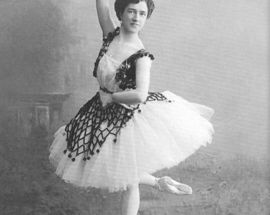
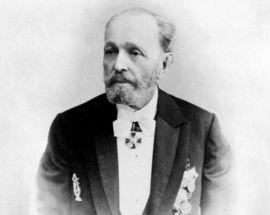

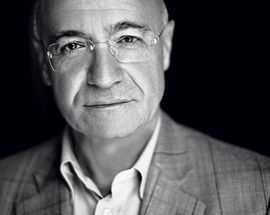
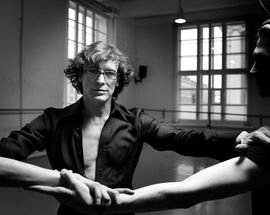
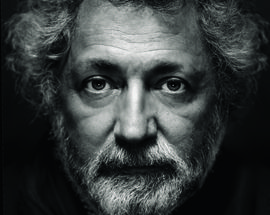

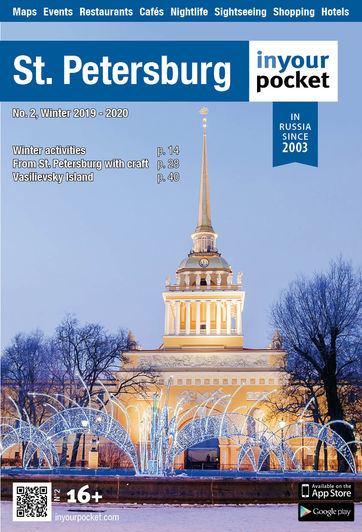


Comments